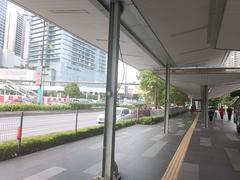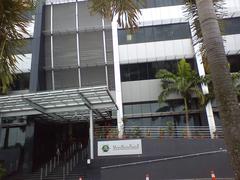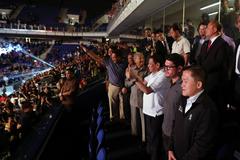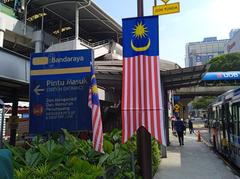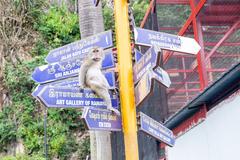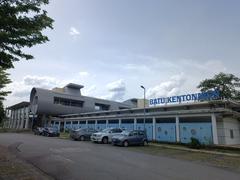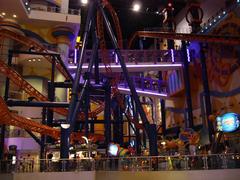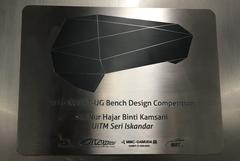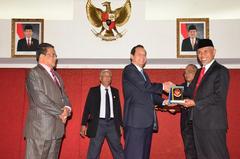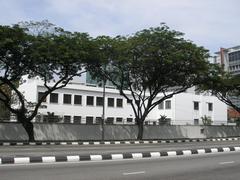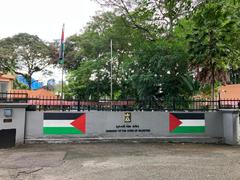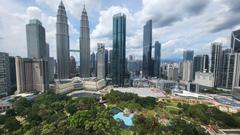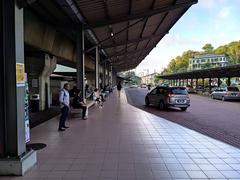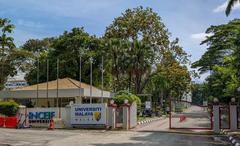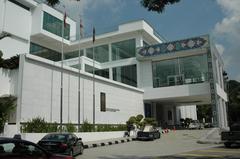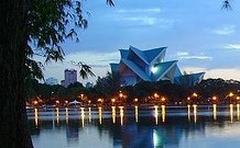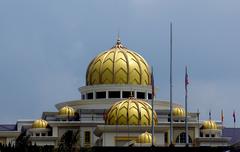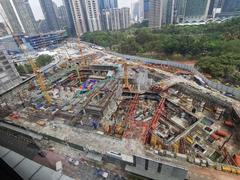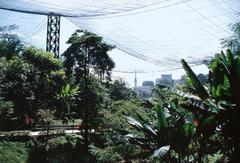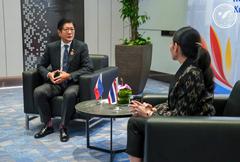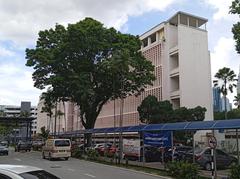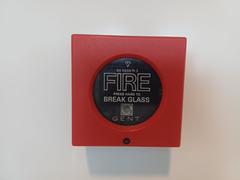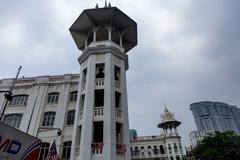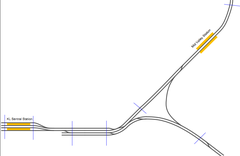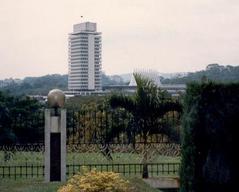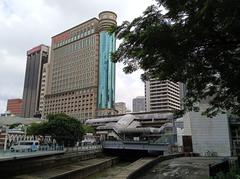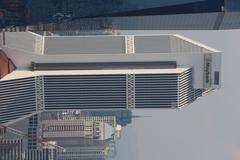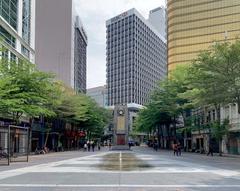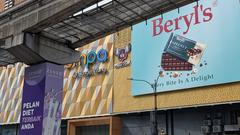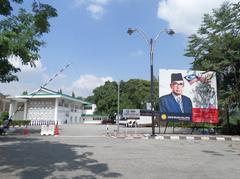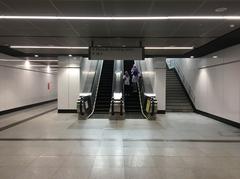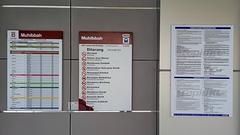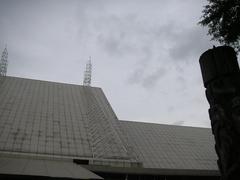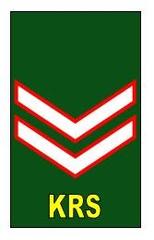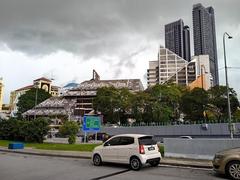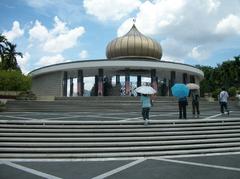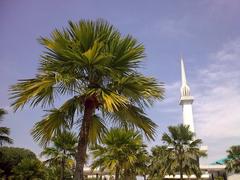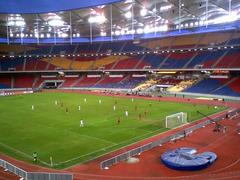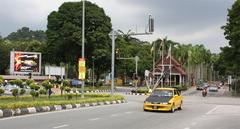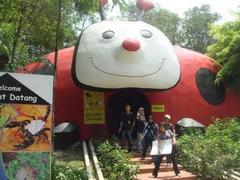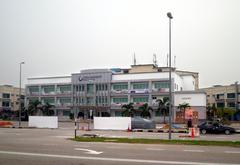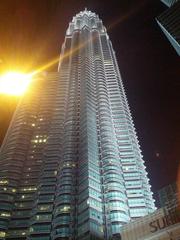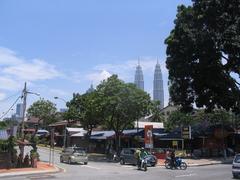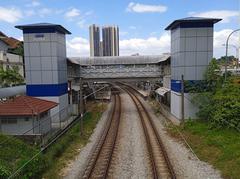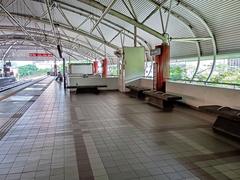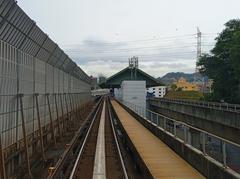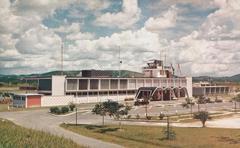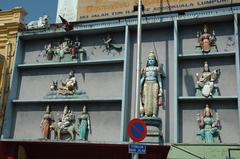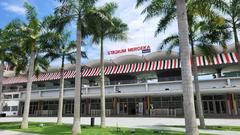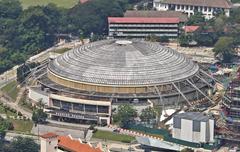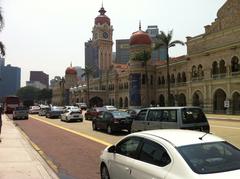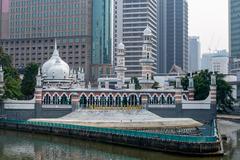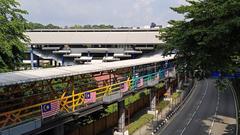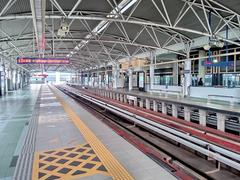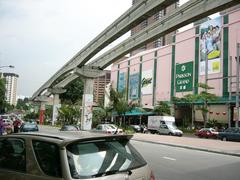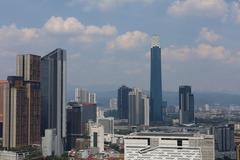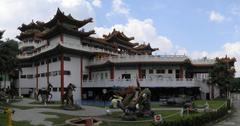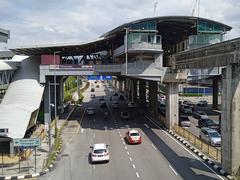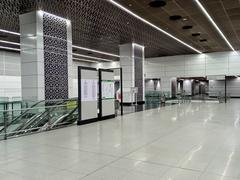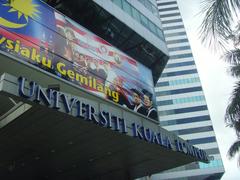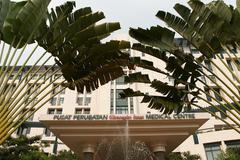Bukit Jalil LRT Station Visiting Guide: Kuala Lumpur Historical Sites, Tickets, and Hours
Date: 14/06/2025
Introduction: Significance of Bukit Jalil LRT Station in Kuala Lumpur
Bukit Jalil LRT Station is a modern gateway in the southern corridor of Kuala Lumpur, seamlessly connecting residents and visitors to one of Malaysia’s most dynamic districts. Since its opening in 1998 for the Commonwealth Games, the station has played a pivotal role in transforming Bukit Jalil from a suburban outpost into a vibrant urban hub. As part of the Sri Petaling Line, it offers direct access to major landmarks like the Bukit Jalil National Stadium, Axiata Arena, and Bukit Jalil Recreational Park, while catalyzing residential, commercial, and infrastructural growth across the Klang Valley.
Architecturally, the station features a blend of modernist design, sustainable elements, and accessibility solutions, including wide platforms, natural lighting, elevators, and tactile paving. Its sports-themed murals and vibrant atmosphere during major events underscore its status as a cultural nexus, reflecting Malaysia’s multicultural identity and passion for sports.
Surrounding the station, a wealth of attractions awaits: from the sprawling KL Sports City and tranquil Bukit Jalil Recreational Park to Pavilion Bukit Jalil Mall and numerous educational institutions. Whether you’re heading to a concert, exploring green spaces, or simply commuting, Bukit Jalil LRT Station is a model of Kuala Lumpur’s urban vitality and inclusivity. For planning assistance, consult the Rapid KL Official website and TripZilla’s Kuala Lumpur train guide.
Contents Overview
- Introduction
- Visiting Hours and Ticket Information
- How to Get There and Accessibility
- Historical Development and Urban Impact
- Architectural Features
- Accessibility and Passenger Amenities
- Connectivity and Wayfinding
- Sustainable Design Elements
- Art and Cultural Integration
- Nearby Attractions and Tourist Tips
- Guided Tours and Special Events
- Travel Tips for Visitors
- FAQ
- Visuals and Media
- Conclusion
- Call to Action
Visiting Hours and Ticket Information
Bukit Jalil LRT Station operates daily from 6:00 AM to midnight. Ticket prices depend on your destination, with options including single-journey tokens and reloadable Touch ‘n Go cards for seamless travel across the RapidKL network. Purchase tickets at counters or automated machines within the station. For the latest fare structures and service updates, refer to the Rapid KL Official website.
How to Get There and Accessibility
The station is located on the Sri Petaling Line, between Sungai Besi and Sri Petaling stations. It is easily accessible via public transit, major expressways (KESAS, MEX), taxis, and e-hailing services. The station is fully equipped for accessibility, offering ramps, tactile paving, and elevators to ensure barrier-free entry for all, including persons with disabilities and families with strollers.
Historical Development and Urban Impact
Origins and Purpose
Opened in July 1998 to serve the 1998 Commonwealth Games, Bukit Jalil LRT Station was originally known as “Sukan Negara” (National Sports) Station. Its creation linked the Athletes’ Village to the National Sports Complex, laying the foundation for Bukit Jalil’s transformation into a key urban and sporting district.
Architectural Evolution
The station underwent a significant thematic upgrade for the 2017 Southeast Asian Games, with new sports-themed graphics, motivational murals, and a relay track floor motif that celebrates its central role in Malaysia’s sports culture.
Urban Growth and Real Estate
Bukit Jalil’s evolution from a peripheral suburb to a major township is closely tied to the station’s connectivity. This accessibility has fueled residential and commercial developments like Vista Komanwel, Savanna, Pavilion Bukit Jalil Mall, and The Havre condominium (Aset Kayamas - The Havre). Property values and rental yields have risen, reflecting the area’s popularity.
Connectivity and Infrastructure
The station’s integration with expressways and public transport hubs supports efficient movement for commuters and event-goers. Extended operating hours during major events facilitate crowd management and sustainable mobility.
Socio-Cultural Significance
Functioning as a social and cultural hub, Bukit Jalil LRT Station brings together people from diverse backgrounds during national celebrations, sporting tournaments, and community gatherings. It also provides access to green spaces, promoting healthy and inclusive urban living.
Future Development
Major projects like Bukit Jalil Sentral (RM21 billion development) will further elevate the area, with the LRT station remaining central to its continued growth (TripZilla).
Architectural Features
Station Layout
Bukit Jalil LRT Station is an elevated structure with two side platforms. Designed for Malaysia’s tropical climate, it features wide overhangs for shelter, glass façades for natural light, and open concourses for efficient passenger flow. Elevators, escalators, and staircases provide multi-level access.
Urban Integration
Its strategic position near highways and residential complexes (like The Havre) encourages transit-oriented development and pedestrian-friendly environments. Covered walkways connect the station to nearby malls and housing areas.
Design Influences
Clean, modernist lines, open spaces, and sports-themed décor define the station’s aesthetic. The surrounding neighborhood incorporates classical and contemporary architectural elements, enhancing the area’s cultural fabric.
Accessibility and Passenger Amenities
- Barrier-Free Access: Elevators, ramps, and tactile paths for all passengers
- Multilingual Signage: Malay, English, and Chinese
- Safety: CCTV, emergency intercoms, and well-lit platforms
- Facilities: Public restrooms, retail kiosks, vending machines, and waiting areas
Connectivity and Wayfinding
Clear signage and dedicated pedestrian walkways link the station to major venues like Bukit Jalil National Stadium, Axiata Arena, and Bukit Jalil Sports Complex. Feeder buses and e-hailing services extend access to attractions further afield.
Sustainable Design Elements
The station employs natural lighting, energy-efficient LEDs, water-saving fixtures, and native landscaping. Its elevated structure promotes natural ventilation, supporting Kuala Lumpur’s sustainability goals.
Art and Cultural Integration
Vibrant sports-themed murals and temporary art installations celebrate Malaysia’s multiculturalism and sporting achievements, making the station a lively public space during major events.
Nearby Attractions and Tourist Tips
KL Sports City
A short walk from the station, this complex includes the Bukit Jalil National Stadium, Axiata Arena, aquatic center, and more. It’s the epicenter for sports, concerts, and festivals.
Bukit Jalil Recreational Park
An 80-acre green space featuring jogging tracks, international-themed gardens, lakes, and playgrounds—a favorite for families and fitness enthusiasts.
Pavilion Bukit Jalil Mall
A premier retail and dining destination just 1.5 km from the station. Accessible by feeder bus or e-hailing, it hosts shops, cafes, and cultural events.
Technology Park Malaysia
A hub for tech companies and innovation, occasionally hosting public exhibitions and workshops.
Sri Petaling & Happy Garden
Nearby neighborhoods known for vibrant food scenes, night markets, and local eateries.
Taman Bukit Jalil Golf & Country Resort
An 18-hole golf course with recreational and dining facilities, open to the public for select activities.
Guided Tours and Special Events
While the station itself does not offer formal tours, nearby attractions and event venues often provide guided tours. Check official websites or local operators for schedules, especially during major events or festivals.
Practical Travel Tips
- Plan Around Events: Expect crowds during sports matches and concerts; arrive early.
- Weather: Carry an umbrella; rain is frequent in Kuala Lumpur.
- Use Contactless Payment: Touch ‘n Go cards speed up ticketing.
- Family-Friendly: Stroller access and family facilities are available.
- Accessibility: Facilities for differently-abled travelers are well maintained.
Frequently Asked Questions (FAQ)
Q: What are the Bukit Jalil LRT Station operating hours?
A: 6:00 AM to midnight daily.
Q: How can I buy tickets?
A: At station counters, vending machines, or with a Touch ‘n Go card.
Q: Is the station accessible for people with disabilities?
A: Yes, with elevators, ramps, and tactile paving.
Q: Are there historical sites nearby?
A: The station is close to modern attractions, but central Kuala Lumpur (accessible by LRT) offers sites like Merdeka Square and the National Museum.
Q: Are there guided tours?
A: Tours are available for nearby venues; check official sites for details.
Visuals and Media
- Image: “Bukit Jalil LRT Station entrance and platform”
- Image: “Bukit Jalil National Stadium during an event”
- Map: Bukit Jalil LRT Station and nearby attractions
(For accessibility, ensure alt text is included for all visuals.)
Conclusion
Bukit Jalil LRT Station is a cornerstone of Kuala Lumpur’s urban and cultural landscape. Its design, connectivity, and amenities support a diverse population, while its proximity to sports, recreational, and retail venues make it an ideal base for exploration. As the area continues to develop, the station’s role as a social, cultural, and economic hub will only grow.
For a smooth and enriched visit, leverage resources like the Rapid KL Official site, Audiala mobile app, and event updates from local venues.
Call to Action
Download the Audiala mobile app for real-time transit information, ticketing, and exclusive guides. Follow us on social media for the latest news, events, and travel tips. Plan your Bukit Jalil adventure today and discover the best of Kuala Lumpur!
References
- Rapid KL Official website
- Aset Kayamas - The Havre
- National Sports Complex
- TripZilla Kuala Lumpur train guide
- Histofreak - Kuala Lumpur History

